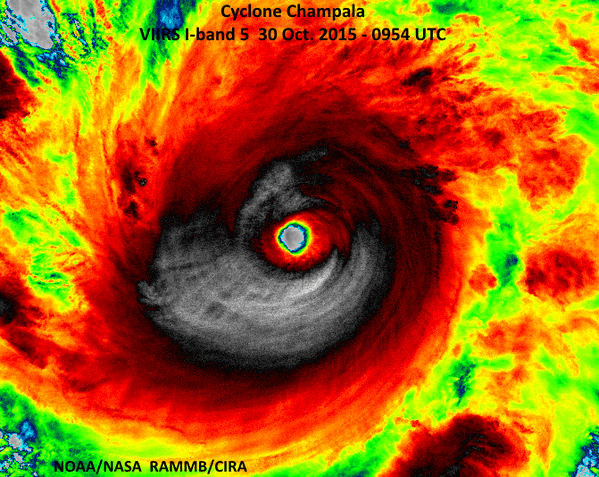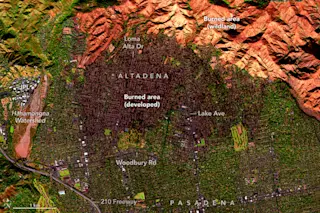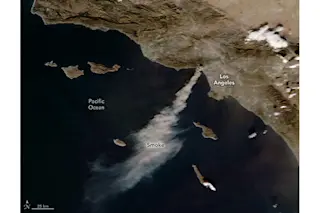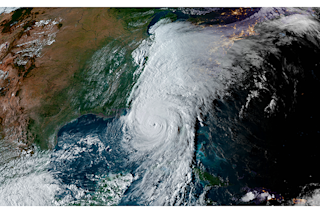Infrared and visible satellite images of Cyclone Chapala alternate in this animation. The images were acquired by the Suomi NPP satellite on Friday, Oct. 30, 2015 as the storm swirled off the coast of the Arabian Peninsula. (Source: NOAA/NASA/RAMMB/CIRA. Note: The source of these images misspelled the name of the storm in the label.) Here comes another one, this time in the Arabian Sea. Last week we had Hurricane Patricia in the Pacific, with surface winds that topped out at 200 miles per hour — the highest reliably-measured surface winds for any tropical cyclone on record. Now we've got Cyclone Chapala swirling over record-warm waters and aiming for the Arabian Peninsula. It is already the second strongest cyclone ever measured in the Arabian Sea (behind Category 5 Cylcone Gonu in 2007). Keep reading for a brief discussion of research tying long-term warming of surface waters in the Indian Ocean overall ...
Cyclone Chapala strengthens rapidly over record-warm water, aims for highly unusual landfall in war-torn Yemen
Cyclone Chapala is set to impact the Arabian Peninsula with record rainfall, fueled by warm sea surface temperatures.
More on Discover
Stay Curious
SubscribeTo The Magazine
Save up to 40% off the cover price when you subscribe to Discover magazine.
Subscribe













